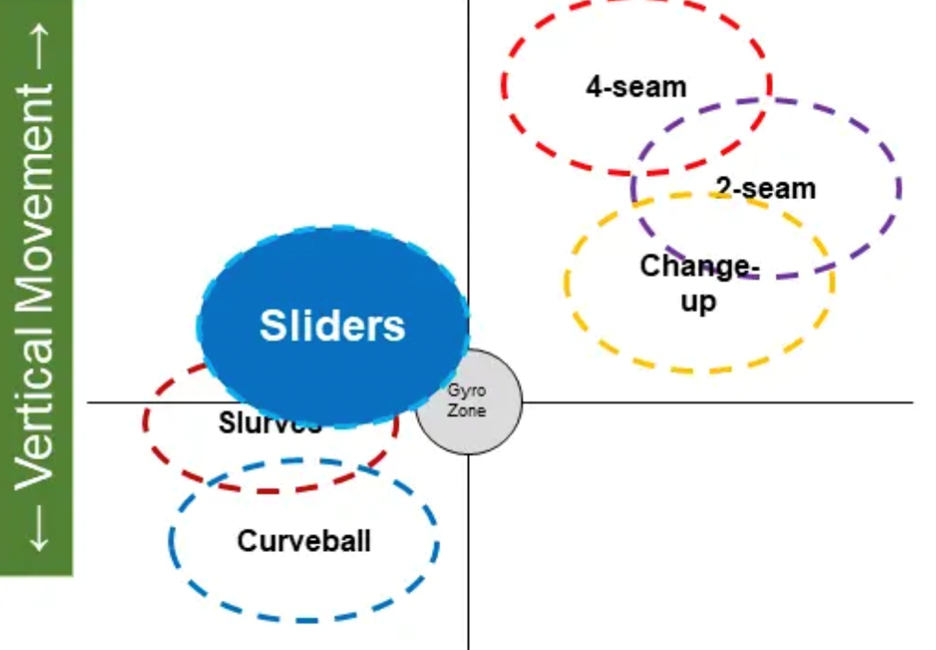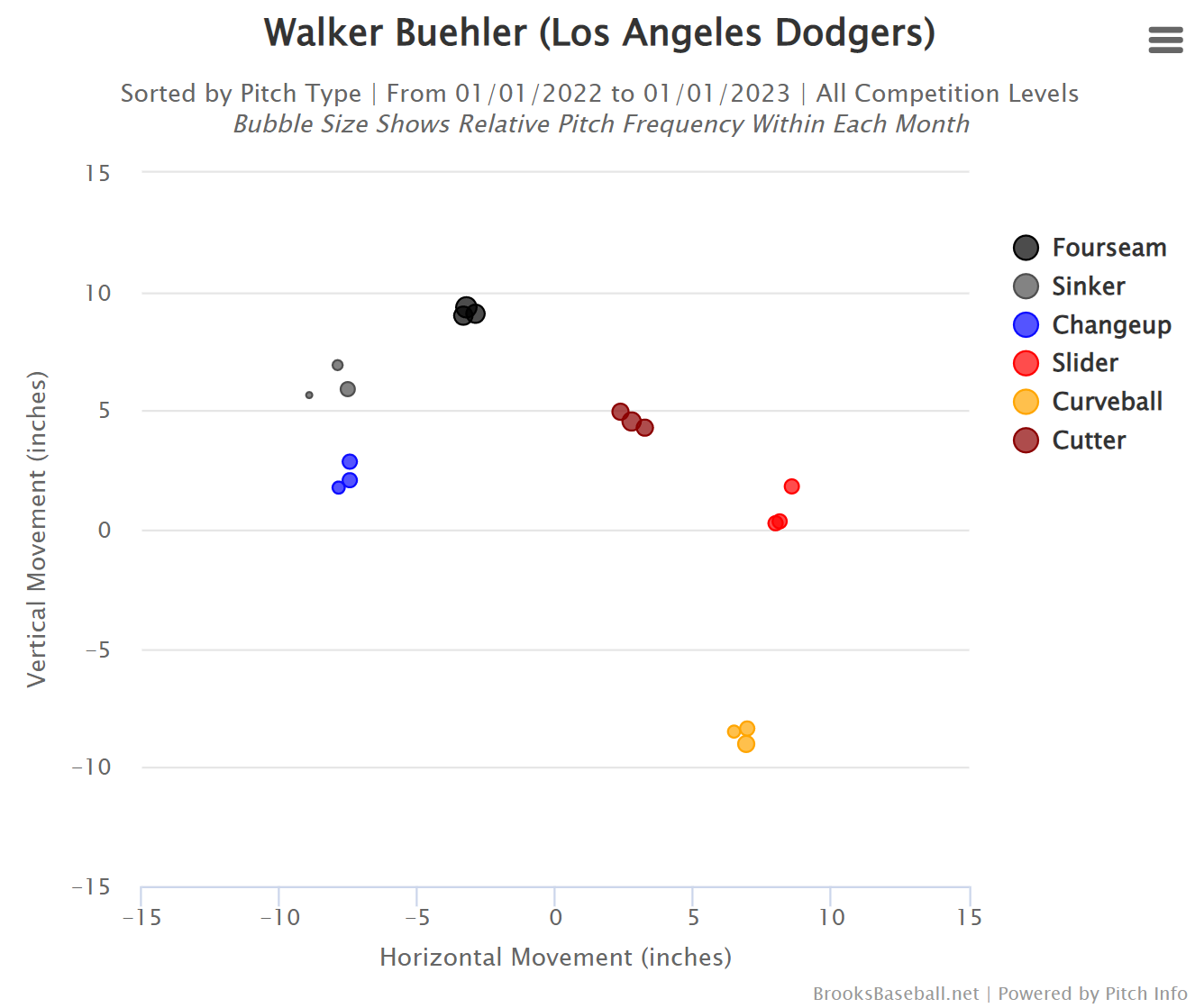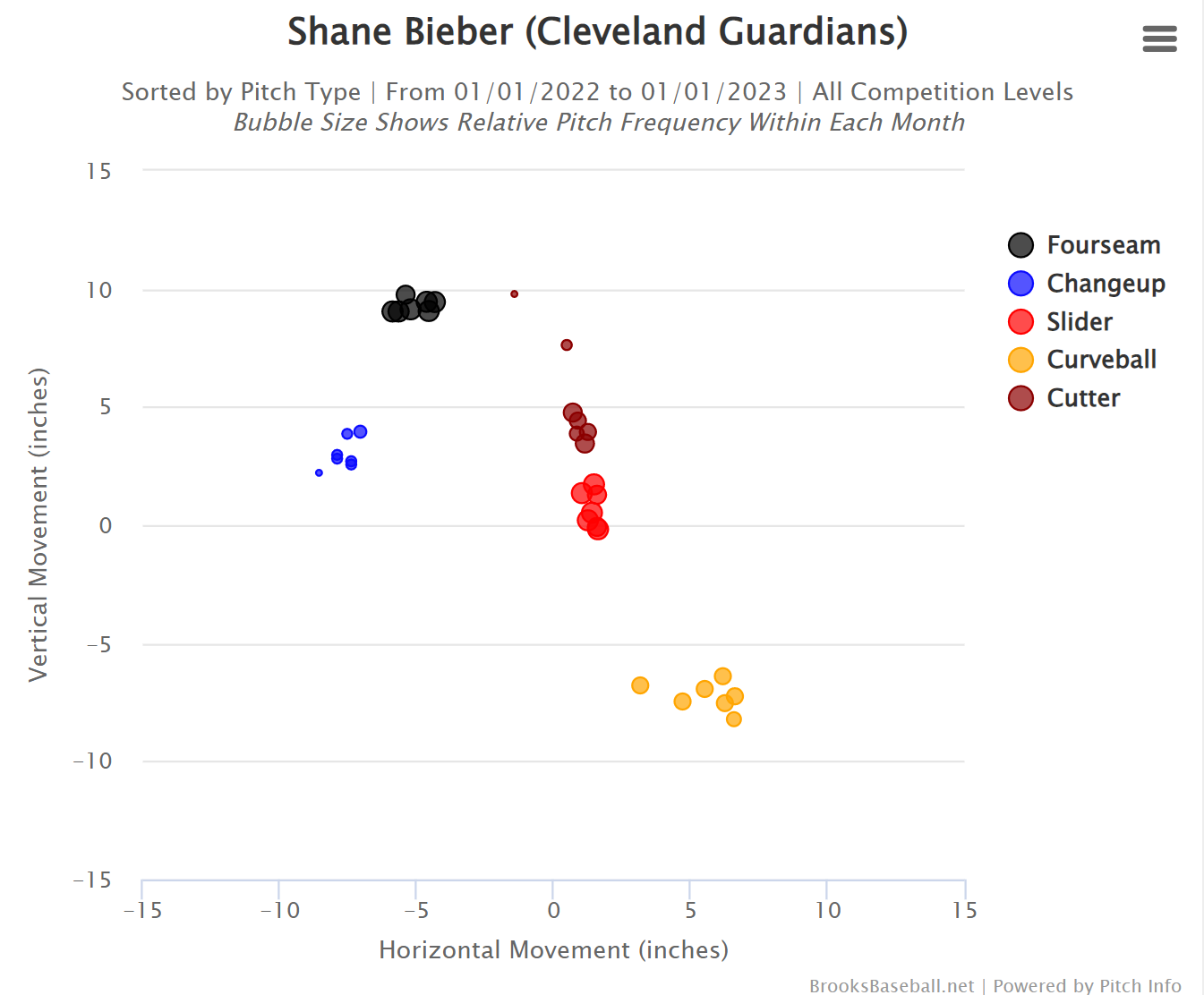
Welcome back to the “How to” series on pitching, where we will be diving into various pitches and speak about different grips, cues, tips, movement profiles, and even top MLB comparisons for reference when looking at a given pitch. Next up… How to Throw a Slider.
Overview
Similarly to the curveball, the slider is another type of off-speed that pitchers can add to their arsenal. Generally speaking, a slider will be thrown anywhere from 5-10 MPH slower than the fastball, depending on which type of slider is thrown. There are two types of sliders:
-
- Sweeping sliders – more side spin and true spin
- Gyro sliders – more gyro spin and less true spin
Later in the article, we will dive into more details regarding the similarities and differences of both types of sliders; however, one thing to note is that both pitches will move on the horizontal plane and “slide” to the pitcher’s glove side to some degree.
Ideally, the pitcher will tunnel the sweeping slider off the 2SFB or CH, making the pitches look similar out of ball release to create an aspect of deception with the pitch. On the other hand, the gyro slider typically plays better off of a 4SFB.
In this article, we will be taking a deep dive into a few different slider grips and cues to help you throw your slider more effectively and efficiently.
Desired Movement Profile
Before we talk about the tips and tricks on how to throw a better slider, let’s continue to discuss how we want this pitch to move.
Typically speaking, we look for a slider to possess more horizontal movement (sweep) than vertical movement (drop). The amount of movement of the pitch will vary based on the type of slider thrown.
Sweeping Sliders – As mentioned previously, sweeping sliders rely heavily on side spin and true spin. By coming “around” the ball, it allows for more horizontal movement, ideally 10-15+ inches, towards the pitcher’s glove side. This will help differentiate the pitch from a curveball and help play off the 2SFB and CH.
Gyro Sliders – On the other hand, gyro sliders rely heavily on gyro spin, and typically will have less true spin, than the sweeping slider. By coming “on the side” of the ball, creating the gyro spin, gravity will play a much bigger part in allowing this pitch to “sweep”. Typically a gyro slider will only have 1-5 inches of horizontal movement, towards a pitcher’s glove side, but could be thrown with a higher velocity then their sweeping counterpart. This allows it to play better off the 4SFB.
Ideal Slider Location on a Movement Chart
A movement chart is a tool that players and coaches can use to analyze the ideal movement and placement of a given pitch.

What each zone represents:
-
- The grey circle in the center of the chart represents the “gyro zone” which is no movement in either the vertical or horizontal plane
- The upper right quadrant represents positive vertical movement and positive horizontal movement
- The upper left-hand quadrant represents positive vertical movement and negative horizontal movement
- The lower right-hand quadrant represents negative vertical movement and positive horizontal movement
- The lower left-hand quadrant represents negative vertical movement and negative horizontal movement
The chart pictured above is representative of a right-handed pitcher’s ideal placement for each pitch. A slider is a pitch you want to “slide” out of the pitcher’s hand. This means it will have negative horizontal break towards the pitcher’s glove side. This puts the upper left-hand quadrant as the most ideal for right-handed sweeping slider.
For lefties, the vertical drop would stay the same. But the horizontal movement that would be desired would have positive value. Therefore, making the upper right-hand quadrant the most ideal for a left-handed sweeping slider.
Interested in learning more about remote programs, you can simply click below to schedule a phone call.
Slider Grips
There are a few different slider grips that we use with our athletes.
Something to note is that there aren’t different slider grips for the sweeper or gyro slider per say… but rather how you throw the pitch that creates the differential in spin and movement.
All these grips will be stationed at different places on the baseball. However, all the slider grips will allow for the middle finger to be pressed up onto a seam. This will allow the pitcher to be able to “rip” around, or off the side, of the baseball which will create the desired spin. Different pitchers have different levels of success with different slider grips. It’s about trail and error and pitcher comfort and results.
Slider Grip #1
Slider Grip #2
Slider Grip #3
For an expanded discussion on slider grips click here.
Cues to Help you Throw a Slider
Let’s start with this… throwing cues are NOT ONE SIZE FITS ALL!!
There are many different cues that people use when teaching pitchers how to throw each pitch. You need to find which cue best suits YOU and helps YOU throw your slider more effectively.
One very important thing to note when throwing the slider is maintaining consistent release point as the rest of your pitches. If a pitcher is completely changing is arm angle to be able to throw this pitch, it will lose all of its deception and value to the pitcher’s arsenal.
Some of the cues that we like to tell our guys are:
Sweeper:
-
- “Come around the ball”
- “3 o’clock to 9 o’clock”
- “Show the back of your hand to the catcher”
Gyro
-
- “Come off the side of the ball”
- “Throw it like a dart/football”
- “Twist the doorknob”
Slider Data: What we like… What we don’t like… (Specifically for athletes who have access to data tracking devices such as Rapsodo, Trackman, PitchLogic, etc.)
What we like to see:
-
- Spin efficiency
- Sweeper around 15% to 35%
- Gyro < 10%
- Relatively consistent spin axis and efficiency from pitch-to-pitch
- Velocity drop off FB of about 5-10 mph (for sweeper, and slightly less for gyro)
- Greater horizontal movement then vertical movement
- Movement to be glove-side
- Spin efficiency
What we don’t like to see:
-
- Spin efficiency higher than 35%
- Somewhat inconsistent spin-axis from pitch-to-pitch
- Velocity drop of more than 10 mph
- Somewhat inconsistent spin-efficiency from pitch-to-pitch (the more inconsistent the spin-axis and spin-efficiency, the more inconsistent the break. This in turn implies less overall command of the pitch
Tunneling Tips – When and Where to Throw a Slider
The sweeping slider is a great pitch to play off a 2SFB or CH. For a righty, the 2SFB and CH will have (+) HB and for a lefty they will have (-) HB. The sweeping slider will move opposite of those two pitches. (So, (-) HB for a righty and (+) HB for a lefty) The reason why these pitches play well off each other is due to the fact that they all operate in the horizontal plane. All three pitches could look very similar out of release point and during the first part of decent towards home plate and create deception for the pitcher.
The gyro slider on the other hand typically plays better of a 4SFB. Due to the fact that the gyro spin allows gravity to play a bigger role in the “sweep” of the pitch, it will break slightly more downward than the sweeper. This will tunnel better with the 4SFB due to the vertical aspect of this pitch. All three pitches could look very similar out of release point and during the first part of decent towards home plate and create deception for the pitcher.
Our suggestions for best times to throw a slider:
-
- 0-0 to get ahead, and disrupt the hitters timing
- 0-1 – after throwing a 2SFB/CH (sweeper), or throwing 4SFB/CT (gyro)
- 0-2 – trying to generate a swing or miss pitch for a strike out
Example of Elite MLB Sliders
Sweeping Slider – Walker Buhler throws an ELITE sweeping SL. In 2021, his last full season, Buhler threw his SL 14% of the time (3rd highest behind his FB and CT). Coming in at 84 MPH and spinning at 2800 RPM (0 VB, (-) 15 HB), it profiles as one of the better sweeping SL in all of baseball. In 2021, Buhler’s SL produced a .190 BA, .199 wOBA, 34.2 whiff %, and 25.9 K%. Being that Buhler relies on a SNK in addition to his 4SFB, it allows him to utilize his sweeping SL and CB to play off both of those pitches. He is a great example when looking at the type of sweeping slider to emulate.

Gyro Slider – Shane Bieber throws an ELITE gyro SL. In 2022, Bieber threw his SL 28.8% of the time (2nd highest usage behind is FB). Coming in at 86 MPH and spinning at 2700 RPM (with (+)1 VB, (-) 2 HB), it profiles as one of the better gyro SL in all of baseball. In 2022, Beiber’s SL produced a .193 BA, .237 wOBA, 39.4 whiff %, and 27.5 K%. Being that Beiber’s primary FB is a 4SFB, the gyro SL plays really well off of that pitch within his arsenal. He is a great example when looking at the type of gyro SL to emulate.

By Jake Lebovitch (Pitching Coordinator, Strength Coach at RPP Baseball)
Articles in the How to Throw series:
You live too far to train with us in-house at RPP? You can now train with us on a REMOTE basis.



